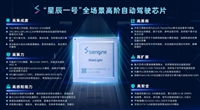MT8971B/72B
L
OUT). The data on the line is made up of information
Functional Description
from the DV and CD ports. The DNIC must combine
information received from both the DV and CD ports
and put it onto the line. At the same time, the data
received from the line must be split into the various
channels and directed to the proper ports. The
usable data rates are 72 and 144 kbit/s as required
for the basic rate interface in ISDN. Full duplex
transmission is made possible through on board
adaptive echo cancellation.
The MT8971B/72B is a device which has been
designed primarily as an interface for the Integrated
Services Digital Network (ISDN). However, it may be
used in practically any application that requires high
speed data transmission over two wires, including
smart telephone sets, workstations, data terminals
and computers.
In the ISDN, the DNIC is ideal for providing the
interface at the U reference point. The device
supports the 2B+D channel format (two 64 kbit/s B-
channels and one 16 kbit/s D-channel) over two
wires as recommended by the CCITT. The line data
is converted to and from the ST-BUS format on the
system side of the network to allow for easy
interfacing with other components such as the S-
interface device in an NT1 arrangement, or to digital
PABX components.
The DNIC has various modes of operation which are
selected through the mode select pins MS0-2. The
two major modes of operation are the MODEM
(MOD) and DIGITAL NETWORK (DN) modes. MOD
mode is a transparent 80 or 160 kbit/s modem. In
DN mode the line carries the B and D channels
formatted for the ISDN at either 80 or 160 kbit/s. In
the DN mode the DV and CD ports are standard ST-
BUS and in MOD mode they are transparent serial
data streams at 80 or 160 kbit/s. Other modes
include: MASTER (MAS) or SLAVE (SLV) mode,
where the timebase and frame synchronization are
provided externally or are extracted from the line and
DUAL or SINGLE (SINGL) port modes, where both
the DV and CD ports are active or where the CD port
is inactive and all information is passed through the
DV port. For a detailed description of the modes see
“Operating Modes” section.
Smart telephone sets with data and voice capability
can be easily implemented using the MT8971B/72B
as a line interface. The device’s high bandwidth and
long loop length capability allows its use in a wide
variety of sets. This can be extended to provide full
data and voice capability to the private subscriber by
the installation of equipment in both the home and
central office or remote concentration equipment.
Within the subscriber equipment the MT8971B/72B
would terminate the line and encode/ decode the
data and voice for transmission while additional
electronics could provide interfaces for a standard
telephone set and any number of data ports
supporting standard data rates for such things as
computer communications and telemetry for remote
meter reading. Digital workstations with a high
degree of networking capability can be designed
using the DNIC for the line interface, offering up to
160 kbit/s data transmission over existing telephone
lines. The MT8971B/72B could also be valuable
within existing computer networks for connecting a
large number of terminals to a computer or for
intercomputer links. The highest data rates existing
for terminal to computer links is 19.2 kbit/s over
conventional analog modems. With the DNIC, this
can be increased up to 160 kbit/s at a very low cost
per line for terminal to computer links and in many
cases this bandwidth would be sufficient for
computer to computer links.
In DIGITAL NETWORK (DN) mode there are three
channels transferred by the DV and CD ports. They
are the B, C and D channels. The B1 and B2
channels each have a bandwidth of 64 kbit/s and are
used for carrying PCM encoded voice or data. These
channels are always transmitted and received
through the DV port (Figures 3, 4, 5, 6). The C-
channel, having a bandwidth of 64 kbit/s, provides a
means for the system to control the DNIC and for the
DNIC to pass status information back to the system.
The C-channel has a Housekeeping (HK) bit which is
the only bit of the C-channel transmitted and
received on the line. The 2B+D channel bits and the
HK bit are double-buffered. The D-channel can be
transmitted or received on the line with either an 8,
16 or 64 kbit/s bandwidth depending on the DNIC’s
mode of operation. Both the HK bit and the D-
channel can be used for end-to-end signalling or low
speed data transfer. In DUAL port mode the C and D
channels are accessed via the CD port (Figure 7)
while in SINGL port mode they are transferred
through the DV port (Figures 5, 6) along with the B1
and B2 channels.
Figure 1 shows the block diagram of the MT8971B/
72B. The DNIC provides a bidirectional interface
between the DV (data/voice) port and a full duplex
line operating at 80 or 160 kbit/s over a single pair of
twisted wires. The DNIC has three serial ports. The
DV port (DSTi/Di, DSTo/Do), the CD (control/data)
port (CDSTi/CDi, CDSTo/CDo) and a line port (LIN,
9-110










 三星深化印度制造布局,供应链本地化进程加速
三星深化印度制造布局,供应链本地化进程加速

 芯擎科技“星辰一号”自动驾驶芯片点亮成功,2025年量产在即
芯擎科技“星辰一号”自动驾驶芯片点亮成功,2025年量产在即

 纳微科技震撼发布GaNSlim革新氮化镓功率芯片
纳微科技震撼发布GaNSlim革新氮化镓功率芯片

 意法半导体发布第四代SiC技术,助力电动汽车电驱
意法半导体发布第四代SiC技术,助力电动汽车电驱
